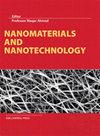Nucleation and growth controlled reduced graphene oxide–supported palladium electrocatalysts for methanol oxidation reaction
IF 3.3
3区 材料科学
Q2 MATERIALS SCIENCE, MULTIDISCIPLINARY
引用次数: 2
Abstract
In spite of advantages of direct methanol fuel cells, low methanol oxidation reaction and fuel crossover from anode to cathode, there remains a challenge that inhibits it from being commercialized. Active electrocatalysts are in high demand to promote the methanol oxidation reaction. The methanol reached at the anode can be immediately reacted, and thus, less methanol to cross to the cathode. The performance of electrocatalysts can be significantly influenced by varying the concentration of precursor solution. Theoretically, concentrated precursor solution facilitates rapid nucleation and growth; diluted precursor solution causes slow nucleation and growth. Rapid nucleation and slow growth have positive effect on the size of electrocatalysts which plays a significant role in the catalytic performance. Upon the addition of appropriate concentration of graphene oxide, the graphene oxide was reported to have stabilizing effect towards the catalyst nanoparticles. This work synthesized reduced graphene oxide–supported palladium electrocatalysts at different concentrations (0.5, 1.0, 2.0, 3.0 and 4.0 mg mL−1) with fixed volume and mass ratio of reduced graphene oxide to palladium by microwave-assisted reduction method. Results showed that reduced graphene oxide–supported palladium synthesized at a concentration of 1.0 mg mL−1 gave the best methanol oxidation reactivity (405.37 mA mg−1) and largest electrochemical active surface area (83.57 m2 g−1).甲醇氧化反应用还原氧化石墨烯负载钯电催化剂的成核和生长控制
尽管直接甲醇燃料电池具有甲醇氧化反应低、燃料从阳极到阴极交叉等优点,但仍存在阻碍其商业化的挑战。催化甲醇氧化反应对活性电催化剂的需求很大。到达阳极的甲醇可以立即反应,因此,较少的甲醇穿过阴极。前驱体溶液浓度的变化对电催化剂的性能有显著影响。理论上,浓缩的前驱体溶液有利于快速成核和生长;稀释的前驱体溶液导致成核和生长缓慢。快速成核和缓慢生长对电催化剂的尺寸有积极影响,对电催化剂的催化性能起着重要作用。在适当浓度的氧化石墨烯的加入下,氧化石墨烯对纳米催化剂具有稳定作用。本文采用微波辅助还原法合成了不同浓度(0.5、1.0、2.0、3.0和4.0 mg mL−1)的还原氧化石墨烯负载钯电催化剂,还原氧化石墨烯与钯的体积和质量比固定。结果表明,在1.0 mg mL−1浓度下合成的还原氧化石墨烯负载钯具有最佳的甲醇氧化反应活性(405.37 mA mg−1)和最大的电化学活性表面积(83.57 m2 g−1)。
本文章由计算机程序翻译,如有差异,请以英文原文为准。
求助全文
约1分钟内获得全文
求助全文
来源期刊

Nanomaterials and Nanotechnology
NANOSCIENCE & NANOTECHNOLOGY-MATERIALS SCIENCE, MULTIDISCIPLINARY
CiteScore
7.20
自引率
21.60%
发文量
13
审稿时长
15 weeks
期刊介绍:
Nanomaterials and Nanotechnology is a JCR ranked, peer-reviewed open access journal addressed to a cross-disciplinary readership including scientists, researchers and professionals in both academia and industry with an interest in nanoscience and nanotechnology. The scope comprises (but is not limited to) the fundamental aspects and applications of nanoscience and nanotechnology
 求助内容:
求助内容: 应助结果提醒方式:
应助结果提醒方式:


